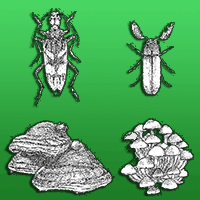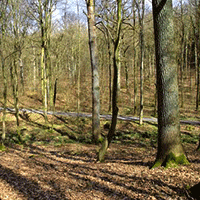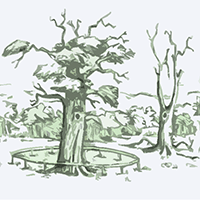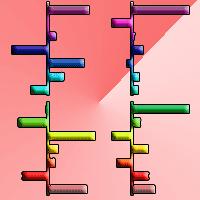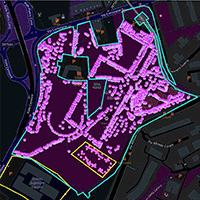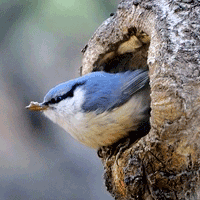
The Habitat-Trees experiment: using exotic tree species as new microhabitats for the native fauna
Livia Zapponi (1), Emma Minari (1), Luca Longo (3), Ilaria Toni (1), Franco Mason (4), Alessandro Campanaro (1)
iForest - Biogeosciences and Forestry, Volume 8, Issue 4, Pages 464-470 (2014)
doi: https://doi.org/10.3832/ifor1281-007
Published: Oct 22, 2014 - Copyright © 2014 SISEF
Research Articles
Abstract
The cavities that develop in veteran trees represent a key microhabitat for forest biodiversity and especially for secondary cavity nesters that rely on this resource for shelter. Since the availability of deadwood, veteran and hollow trees is threatened by forest management, we explored the possibility of increasing the presence of these scarce resources. To increase the abundance of dead wood-microhabitats, 113 trees of the hybrid planes (Platanus x acerifolia) were converted into new living structures, the Habitat Trees (HT). To investigate the potential of this resource on the native avian fauna, six types of cavities were designed according to the size requirements of the target bird species. The temporal evolution of the cavities and their use by birds were then studied for eight years. The artificial cavities generally did not compromise growth and stability of the trees, and the majority remained alive. These hollows offered better thermal insulation compared to traditional nest-boxes and natural cavities. Their use increased during the first three years, reaching the 80%. In the following years, the use declined (probably because of the increase of rot and displacement of the lids).This highlights the need of management to maintain their suitability through time. Our results suggest a possible cost-effective alternative use of alien tree species, which should be included in management actions to compensate the shortage of hollow trees in managed forests.
Keywords
Birds, Deadwood, Exotic Species, Forest Management, LIFE Project, Saproxylic Organisms
Authors’ Info
Authors’ address
Emma Minari
Ilaria Toni
Alessandro Campanaro
Centro Nazionale per lo Studio e Conservazione della Biodiversità Forestale “Bosco Fontana”, str. Mantova 29, I-46045 Marmirolo (MN, Italy)
v. XXVIII Marzo 19, I-37133 Verona (Italy)
Centro Nazionale per lo Studio e la Conservazione della Biodiversità Forestale “Bosco Fontana” di Verona, v. C. Ederle 16/a I-37126 Verona (Italy)
Corresponding author
Paper Info
Citation
Zapponi L, Minari E, Longo L, Toni I, Mason F, Campanaro A (2014). The Habitat-Trees experiment: using exotic tree species as new microhabitats for the native fauna. iForest 8: 464-470. - doi: 10.3832/ifor1281-007
Academic Editor
Massimo Faccoli
Paper history
Received: Mar 06, 2014
Accepted: Jul 06, 2014
First online: Oct 22, 2014
Publication Date: Aug 02, 2015
Publication Time: 3.60 months
Copyright Information
© SISEF - The Italian Society of Silviculture and Forest Ecology 2014
Open Access
This article is distributed under the terms of the Creative Commons Attribution-Non Commercial 4.0 International (https://creativecommons.org/licenses/by-nc/4.0/), which permits unrestricted use, distribution, and reproduction in any medium, provided you give appropriate credit to the original author(s) and the source, provide a link to the Creative Commons license, and indicate if changes were made.
Web Metrics
Breakdown by View Type
Article Usage
Total Article Views: 54661
(from publication date up to now)
Breakdown by View Type
HTML Page Views: 45311
Abstract Page Views: 3284
PDF Downloads: 4509
Citation/Reference Downloads: 73
XML Downloads: 1484
Web Metrics
Days since publication: 4055
Overall contacts: 54661
Avg. contacts per week: 94.36
Citation Metrics
Article Citations
Article citations are based on data periodically collected from the Clarivate Web of Science web site
(last update: Mar 2025)
Total number of cites (since 2015): 20
Average cites per year: 1.82
Publication Metrics
by Dimensions ©
Articles citing this article
List of the papers citing this article based on CrossRef Cited-by.
References
Techniques for re-establishment of dead wood for saproxylic fauna conservation. Life Nature Project NAT/IT/99/ 6245 “Bosco della Fontana” (Mantova, Italy). Gianluigi Arcari Editore, Mantova, Italy, pp. 112.
Gscholar
Use of hyperspectral and lidar data for classification of complex forest areas. In: “Canopy analysis and dynamics of a floodplain forest” (Gianelle D, Travaglini D, Mason F, Minari E, Chirici G, Chemini C eds). Cierre Grafica Editore, Verona, Italy, pp. 25-37.
Gscholar
Are nest boxes a viable alternative source of cavities for hollow-dependent animals? Long-term monitoring of nest box occupancy, pest use and attrition. Biological Conservation 142: 33-42.
CrossRef | Gscholar
Uccelli [Birds]. In: “Vertebrati di un bosco planiziario padano Bosco della Fontana” (Longo L, Nadali A eds). Gianluigi Arcari Editore, Mantova, Italy, pp. 21-63. [in Italian]
Gscholar
Habitat trees: instructions for creating and monitoring nest holes. In: “Techniques for reestablishment of dead wood for saproxylic fauna conservation” (Cavalli R, Mason F eds). Life nature project NAT/IT/99/6245 “Bosco della Fontana” (Mantova, Italy). Gianluigi Arcari Editore, Mantova, Italy, pp. 63-68.
Gscholar
“Habitat trees” and other actions for birds. In: Proceedings of the International Symposium “Dead wood: a key to biodiversity” (Mason F, Nardi G, Tisato M eds). Mantova (Italy) 29-31 May 2003. Sherwood, Arezzo, Italy, pp. 49-50.
Gscholar
Report: relazione ornitologica SIC e ZPS “Bosco Fontana”. Indagine conoscitiva di aggiornamento sugli uccelli a fini gestionali [Report on the bird fauna. Study on the birds for management purposes]. In: “Integrazione del Piano di Gestione della Riserva Naturale Statale e Sito Natura 2000 IT 20B0011 Bosco della Fontana” (Hardersen S, Toni I eds). Programma di Sviluppo Rurale 2007-2013 (FEARS), Regione Lombardia, Azione 323 A, Mantova, Italy, pp. 168. [in Italian]
Gscholar
Dinamica di una foresta della pianura padana: Bosco della fontana [Dynamic of a forest in the Po floodplain: Bosco Fontana] (2nd edn). Gianluigi Arcari Editore, Mantova, Italy, pp. 224. [in Italian]
Gscholar
State of Europe’s forests 2007. The MCPFE report on sustainable forest management in Europe. In: “5th Ministerial Conference on the Protection of Forests in Europe” (MCPFE Liaison Unit Warsaw). UNECE and FAO, Warsaw, Poland, pp. 247.
Gscholar
Saproxylic invertebrates and their conservation. Nature and environment series, No. 42. Council of Europe, Strasbourg, France, pp. 80.
Gscholar
Breeding density and success, and diet composition of little owls Athene noctua in steppe-like habitats in Portugal. Ornis Fennica 85: 22.
Gscholar
Sampling deadwood within Bosco della Fontana. In: “Canopy analysis and dynamics of a floodplain forest” (Gianelle D, Travaglini D, Mason F, Minari E, Chirici G, Chemini C eds). Cierre Grafica Editore, Verona, Italy, pp. 59-68.
Gscholar

